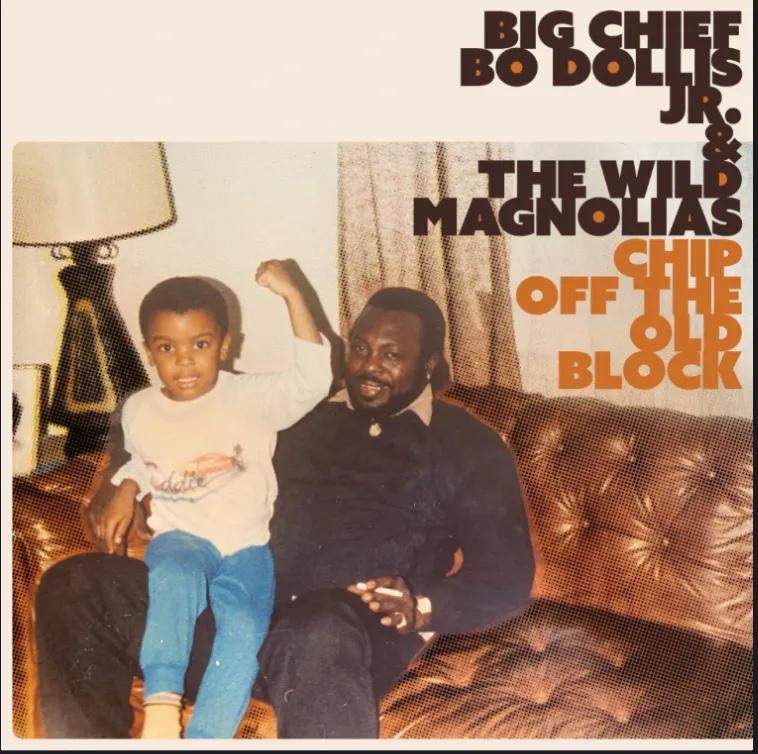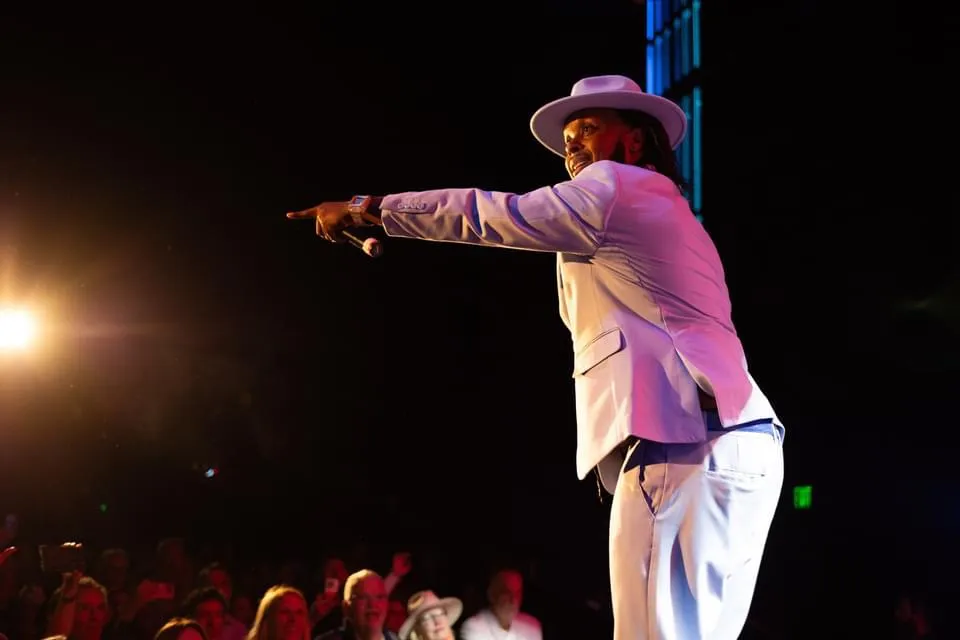Big Chief Bo Dollis Jr. doesn’t stand on ceremony. “Yeah, that’s fine,” he says with an easy smile when asked if Bo will do. The title of Big Chief was inherited from his father, Bo Dollis Sr., but the younger Bo brings his own flair to the role. On June 13, 2025, he and the Wild Magnolias released their third album, Chip Off The Old Block—an intriguing mix of Memphis blues and Mardi Gras Indian music.
But then, the Mardi Gras Indians are not your typical Indians. More about that later.

The elder Dollis brought Mardi Gras Indian music and culture not only into the national consciousness but the world’s. His son usually would be right by his side wherever Sr. went to perform. “I’ve been traveling since I was 13 with my dad,” Bo told me. “My first place I ever went was Japan. You can picture a 13-year-old going to Japan. It (the music) is a change. But I go over there now and it’s very much acceptable.”
The album consists of covers – like the title song “Chip Off The Old Block” first recorded by Johnny Jones and the King Casuals in 1969 – and originals, such as “Young Time Indian: Indian Red.” It was recorded in Memphis at Royal Studios, recording home to such luminaries as Al Green, Tina Turner, Chuck Berry, and Buddy Guy.
“Al Green and Otis Redding were my top favorites because of my Mom and my Dad,” Bo told me. “They had eight-tracks of Al Green and Otis – and Tina Turner. I was a big fan.” Laughing, he added, “I used to say Tina Turner was my girlfriend for a long time!”
The Hi Rhythm Section provided backing on the album. This is the same group that had played for Green and was influential in creating the Memphis Soul sound. The Memphis sound is a large presence in the new album, but what about the Mardi Gras Indian sound for those who are not familiar with the music?
Bo explained it to me using the Otis Redding cover of “Hard To Handle,” which features Anjelika Joseph on lead vocals. The funk is right up front on full aural display. How about the Mardi Gras Indian influence? “You hear it in the little chants in the background. So you get a little bit of Memphis and New Orleans. You can feel the Mardi Gras in it but I (also) feel the soul of Otis Redding. And that’s my main focus in a lot of the songs.”
“A Nickel And A Nail” is another song where he says “certain things that are Indian-related.” Then there is “Chip Off The Old Block,” a tribute in some ways to his father. “There’s a break in between (verses) where I’m talking about the older Indians that have passed away outside of my Daddy that I have learned from.”
The Indian influence then is layered into the main Memphis Sound that is the foundation of the album. So now then, who are the Mardi Gras Indians? Their story is rich and complex but a brief explanation is in order. As Bo Dolis, Jr. explains, “When slavery was going on, the slaves escaped to the Indians.” The Native Americans took them in and gave them shelter. Although there was some tension between the two marginalized groups they found a way of supporting each other.
Fast-forward several years and the tradition of Mardi Gras. “In New Orleans Mardi Gras is basically on St. Charles, Canal Street, Bourbon Street,” Bo explained. “Blacks couldn’t go on St. Charles. We couldn’t go on Canal Street. So we made neighborhood parades. That is how the Mardi Gras Indians started.”
Each neighborhood formed a tribe of Indians, a term meant to pay respect to Native Americans for their assistance in escaping the tyranny of slavery. Tribes take their names from the local streets and important cultural figures. So the Wild Magnolias are just one of several Mardi Gras Indian tribes in New Orleans.
Bo tries to infuse the New Orleans tradition into his music and it is very infectious. Bo says “I tell anybody who comes to my show “You are gonna dance!’ We won’t be doing no slow songs. We won’t be rocking side to side. Wear some comfortable shoes because you’re gonna dance.”
Being an ambassador of sorts for New Orleans is important to Bo. “My main focus, even when I travel – I think about the people who haven’t come to New Orleans,” he says. “I want to bring New Orleans to them. I want them to say, ‘I really felt like I was in New Orleans.’”


